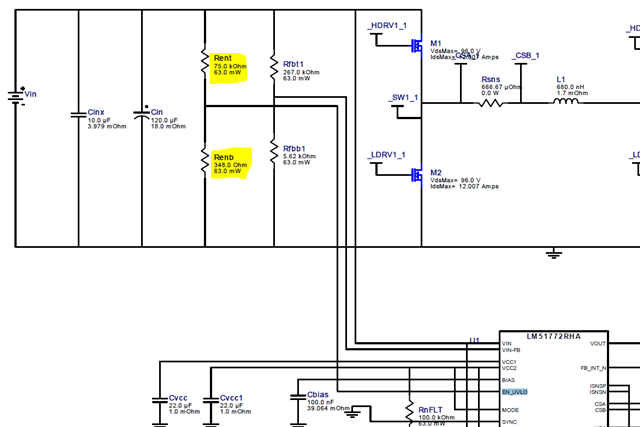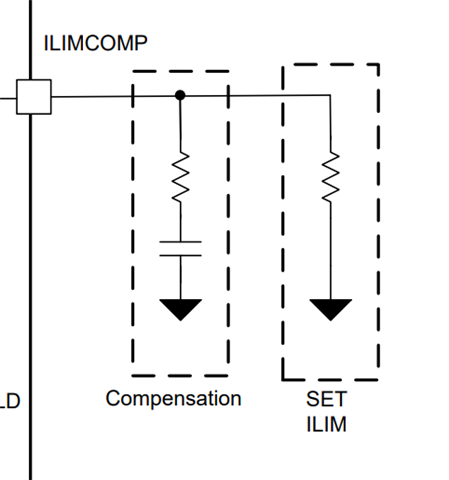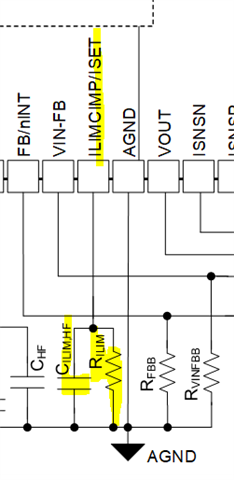Tool/software:
Hi All,
I have some questions about LM51772.
(1) When setting the output voltage via I2C, can the FB/SEL_intFB terminal be directly connected to VCC2?
Also, if connected to VCC2, what will the default output voltage be?
(2) I have a question about the EN/UVLO terminal.
I used webench to refer to the circuit diagram. The EN/UVLO voltage divider resistor values came out to be Rent = 75 kohm / Renb = 348 ohms.
This doesn't seem correct to me. The datasheet says Renb = 12.4 kohm.
If Renb = 348 ohms is correct, please explain why.
(3) I have a question about the BIAS terminal.
When not in use, I connect it to GND. Is it better to connect it directly? Or would it be better to connect it to GND via a 0.1uF capacitor?
(4) I have a question about the timing of I2C settings.
Is the following understanding of the procedure for setting registers via I2C correct?
1. Input to Vin
2. Set the nRST pin high
3. Set each register via I2C (setting the output voltage, etc.)
4. Set the EN pin high; the set voltage is output from VOUT.
Also, is it possible to change the output voltage or buck-boost operation via I2C while EN is high?
Best Regards,
Ishiwata








